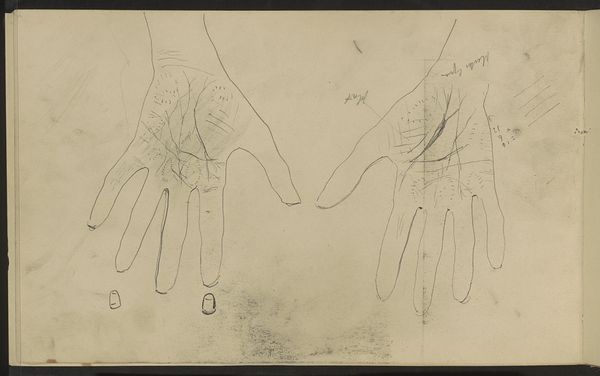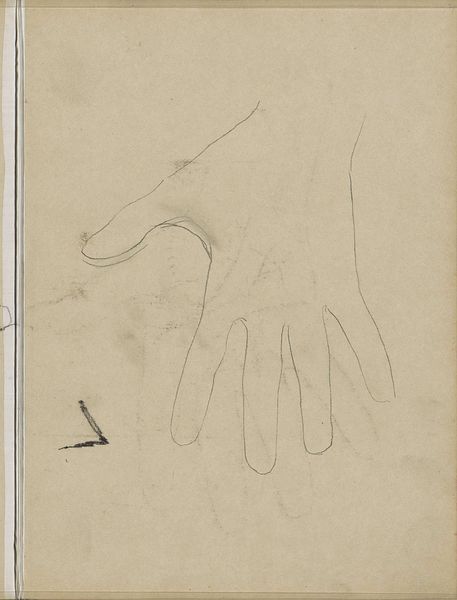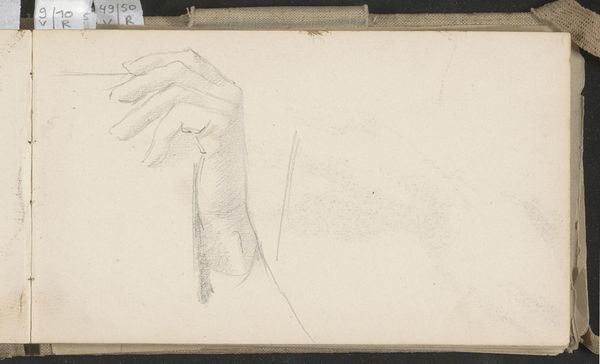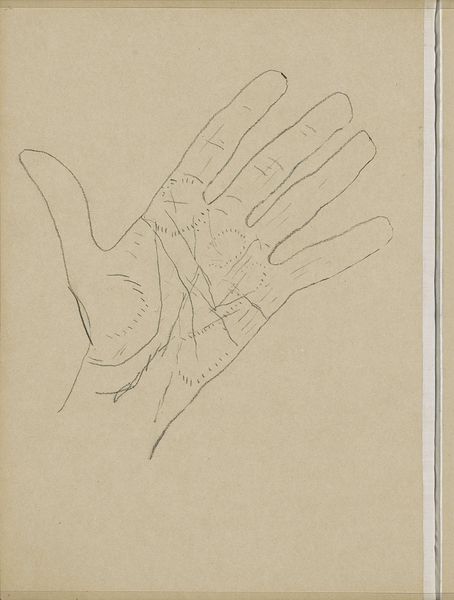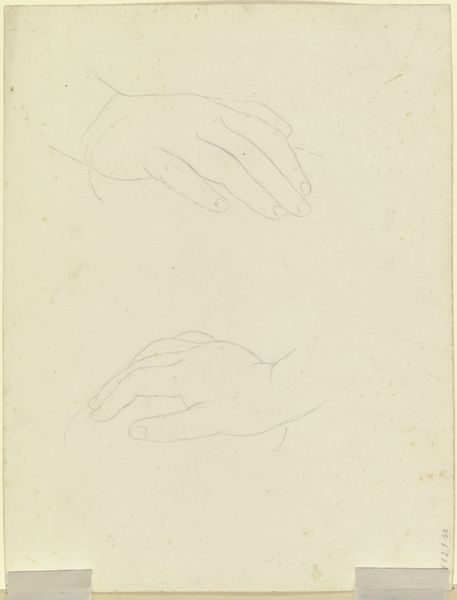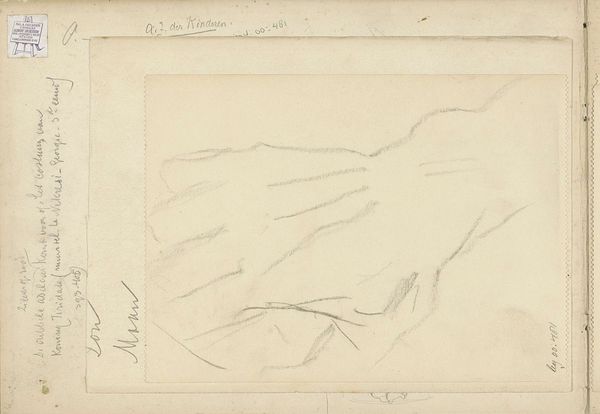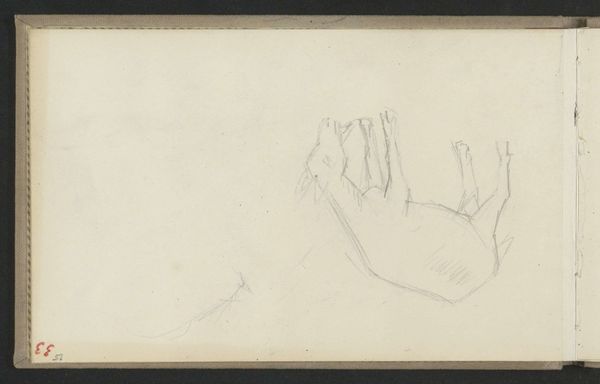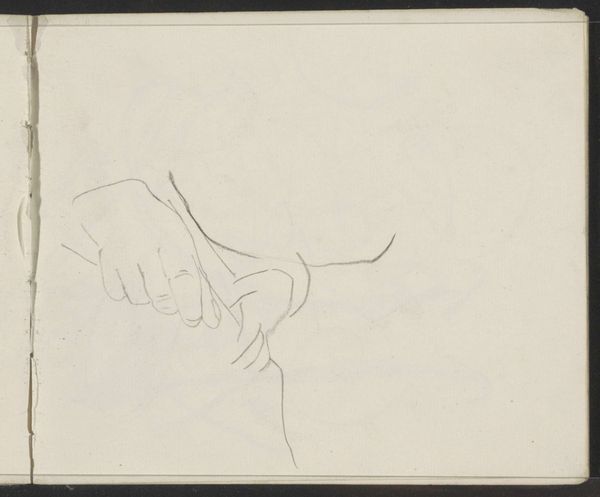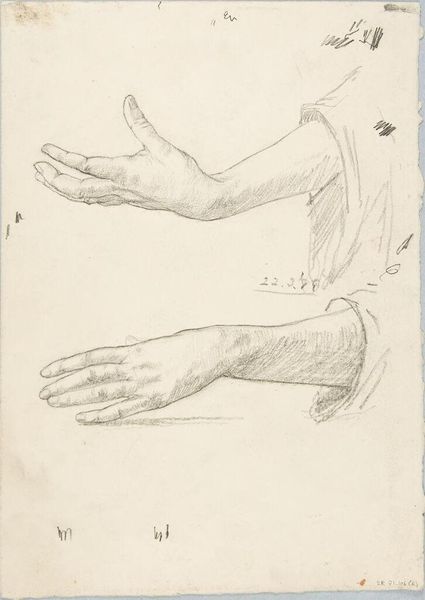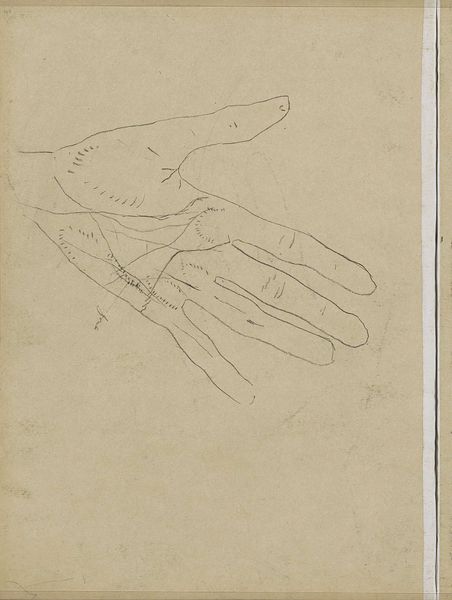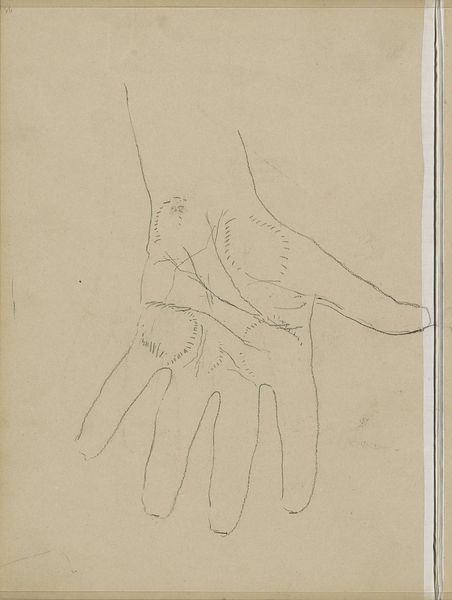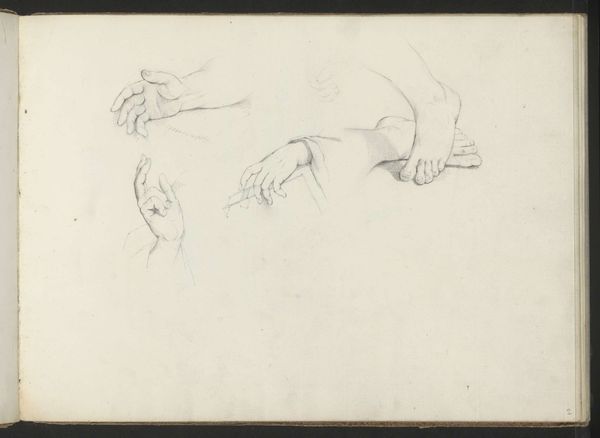
drawing, paper, pencil
#
portrait
#
drawing
#
light pencil work
#
sketch book
#
incomplete sketchy
#
paper
#
personal sketchbook
#
idea generation sketch
#
sketchwork
#
ink drawing experimentation
#
pen-ink sketch
#
pencil
#
line
#
sketchbook drawing
#
sketchbook art
#
realism
Copyright: Rijks Museum: Open Domain
Editor: So, here we have Willem Witsen's "Handen en nagels," dating from around 1897 to 1910. It's a pencil drawing on paper, currently held at the Rijksmuseum. What strikes me is how ephemeral it feels—like a fleeting thought captured on paper. What do you see in this piece? Curator: I see this drawing, precisely because of its 'ephemeral' nature as you say, as providing unique insights into the artist's process, reflecting the art world and the function of the artist in broader society. The intimate glimpse into Witsen's sketchbook bypasses the polished presentation intended for public consumption. Sketchbooks from this era allow us to see artmaking as a process interwoven with daily life, moving away from purely academic constraints. What kind of stories might a sketchbook like this hold about art education at the time? Editor: That's interesting! It’s like seeing the raw ingredients before the finished dish. Do you think that by showing his workings, so to speak, the artist would've affected perceptions of the art establishment and institutional frameworks? Curator: Precisely. Displaying such sketches today challenges the conventional narrative of artistic genius. Think about the rising influence of Impressionism and Post-Impressionism at the time. This style of sketching suggests a move away from highly rendered, academic works towards capturing fleeting moments and individual impressions, and by revealing works like these, they are imbued with cultural relevance. These pieces helped form modern notions about artists, as experimental figures breaking with institutional constraints, no? Editor: I see your point! Presenting preliminary sketches elevates the artistic process itself. So, by exhibiting "Handen en nagels," are we celebrating the artist's experimentation just as much as a perfectly finished painting? Curator: Yes, indeed. This changes how museums influence cultural understanding. A study like this provides evidence that pushes beyond an exclusive focus on final products. It is more about process. What did you learn while viewing it? Editor: I now have an interesting perspective of the value we ascribe not only to the "finished work" but to all steps in between!
Comments
No comments
Be the first to comment and join the conversation on the ultimate creative platform.
